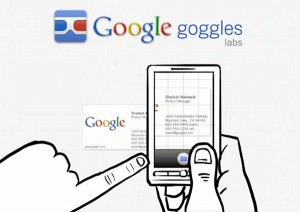
On August 24, 2010, the L.A. Times published a photo of a man who had just stolen a $9,200 Rolex gold watch from Classic Design, a store in the California, Glendale Galleria mall. The Glendale police department requested help in identifying the man in the photo. As this photo circulates the Internet and reaches more and more people, it will likely reach someone who can identify this person and help apprehend him.
Technology probably could in the near future identify this man with the use of Goggles by Google. Although David Petrou, a project lead of Google Goggles, claims that for privacy reasons, Google does not do facial recognition, one could see that it would certainly be helpful in catching criminals.
Currently, the new Goggles software allows cell phone users to snap photos and send them to Google’s cloud services. Computer vision algorithms organize search results and provide you with information about what you are seeing. In order for Google to identify the correct information in the picture, it has to compare it with an existing database. They already have 150,000 images for landmarks which give correct results only 50% to 60% of the time. Goggles can also be used with logos, contact info, artwork, businesses, products, barcodes, or text.
The primary use for Goggles is in language translation, helping people traveling in foreign countries. The user can photograph signs, menus, and other text related items and the output will be in the users native language. Goggles can translate English, French, Italian, German and Spanish.
Given the rapid development of technology in the last fifteen years, one wonders what life will look like in 2030. Will someone have developed the Goggle technology to be accurate 99% of the time? Will society agree to allow law enforcement officials to use a perfected facial recognition software in their pursuit of criminals? Will people be able to snap a photo of you and find out instantly where you are from? What does the future hold for us? What do you think?